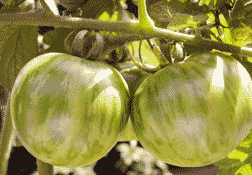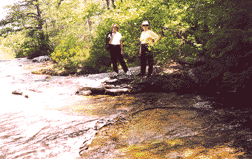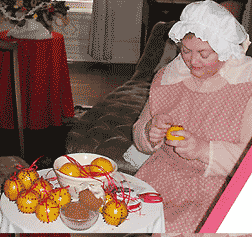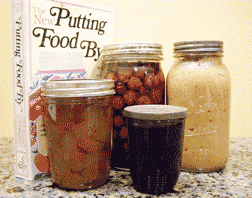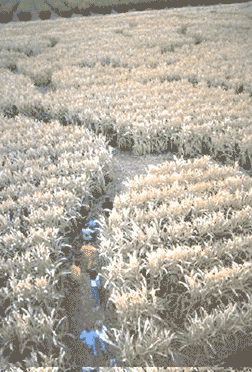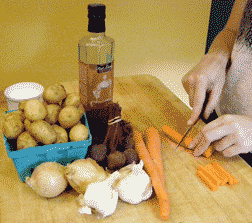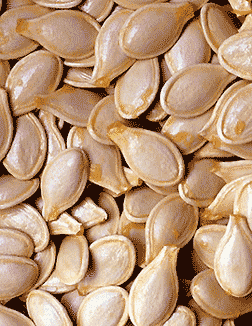 |
|||||||||||
|
|||||||||||
|
|||||||||||
The Fun Doesn’t Have to Stop Just Because Labor Day’s Come and Gone
by Kat Bennett, Kat Burke, Dennis Doyle, Dotty Holcomb Dougherty, Carrie Madren, Helena Mann Melnitchenko, Sandra Olivetti Martin, J. Alex Knoll, Julie Randolph, Bethany Rodgers, Eileen Slovak, Aubree Stafford, Michelle Steel and Margaret TearmanSummer started as a fresh sheet of paper for us to fill with adventures, travels, fruits of the season, good company and more. Through the last 101 days we’ve caught all summer has to offer. As we say goodbye to summer’s carefree days, we welcome autumn, with its chameleon leaves changing and the mornings crisping. Savor fall the first time you see your foggy breath or hear the first crunch of leaves underfoot, as you station a pumpkin at your door, or bounce along on a hay wagon. To help you move into autumn with no regret, we present Bay Weekly’s annual guide, 50 Ways to Leave Your Summer. –Carrie Madren1. Fall Fishing FrenzyLabor Day may mark the end of carefree days on the Chesapeake for many, but for anglers, it is the beginning of the best rockfish season of the year: Fall Frenzy. Shortening days and dropping temperatures mean one thing to striped bass: Eat up for winter. Baitfish know that the chilly days are coming, too, as they school up and begin migrating to their winter quarters. When the masses of baitfish and the famished rockfish meet up, there is a wild time to be had, especially for anglers. A flock of wheeling, screaming seagulls is the most obvious indication of a rockfish-baitfish collision. Easing up to feeding schools of flashing, feeding stripers and casting lures directly into the meleé will get you instant action, but working the edges will often result in bigger fish. The really big guys like to stay down current and a little deeper in the water column. There, they quietly and effortlessly sip up the cripples that the smaller schoolies miss in their furious activities on the surface. The best part is that this action lasts well into November.
2. Revel at the Maryland Renaissance FestivalTravel back in time to the era of knights and princesses, villages and artisans, turkey legs and steak on a stake. King Henry VIII holds court in the 25-acre Revel Grove each weekend through October 21 at the annual Maryland Renaissance Festival. The year is 1540, and King Henry is anticipating the arrival of his wife-to-be, Anne of Cleves, whom he has seen only in a portrait. Witness the royal drama, or revel among the lords, ladies, magicians and sword-swallowers. Marvel at glassblowers, who can turn molten sand into creations fragile as soap bubbles, just one of 130 shops. Cheer on jousting knights. Kids festoon their faces with painted swirls and flourishes, while adults join The Pyrates Royale at the White Hart Tavern to toast in autumn. SaSu thru October 21 @ AACo. StateFairgrounds, General’s Hwy., Crownsville: 888-888-8888. www.rennfest.com
3. Catch a Football GameSay goodbye to summer by declaring hello to football season. From peewee to pro, the Bay area has a team for you. Put on your favorite team’s sweatshirt, pack some sandwiches and a few sodas and be ready to rally — win or lose — around the home team. Catch an early season game at one of the local high schools and root for the up-and-coming athletes of tomorrow. Find game times and locations at www.viewmyschedule.com by typing in the name of your local school’s team. For a bigger game, visit the Naval Academy’s 35,000-seat stadium and cheer on the Midshipmen. Tickets at www.navysports.cstv.com. For yet more excitement, wear terrapin red and head west to College Park, where a slew of loyal Terps fans pack the parking lot for hours in anticipation of every home game: http://umterps.cstv.com/sports/m-footbl/sched/md-m-footbl-sched.html. Pro-football fans can visit www.redskins.com for the season schedule, but games are typically sold out long in advance. Try for more easily obtainable Baltimore Ravens tickets: http//ravens-tickets.com for single games. 4. Frolic on a Farm Hunker down on a hayride. Sip a cup of cider. Pat a goat. Find the perfect pumpkin and the silliest gourd. Select cornstalks for your scarecrow, mums for your garden and apples for crisp sweetness. Catch up with fall at these Bay Country farms, brimming with good food, fancy flowers and fun: Bowles Farms is the home of the 2007 Cal Ripken Jr. corn maze. 10am-9pm Sa; 10am-6pm Su @ 22880 Budds Creek Rd. Leonardtown: www.bowlesfarm.com. Spot the giant mum mural at Doepkens Farm. 10am-6pm Tu-Su @ 2957 Davidsonville Rd. Gambrills: 410-721-2739. Forrest Hall Farm is an orchard of 3,000 apple trees with a corn maze and farm produce for sale. 11am-dusk Tu-Sa (also M in Oct.) @ Avie Ln., Mechanicsville: 301-884-3086. Mums, activities and corn maze. 9am-5pm M-F; 9am-4pm SaSu @ Greenstreet Gardens, 391 Rt. 258, Lothian: 410-867-9500. Homestead Gardens Fall Festival features children’s activities and pumpkins; flowers and llamas year-round. Fall festival 11am-4pm SaSu, Sept. 29-Oct 28 @ 743 Rt. 214, Davidsonville: 410-798-5000. Learn about farming and visit farm animals at Kinder Farm Park. 7am-dusk daily but Tu off Jumpers Hole Rd., Millersville: 410-222-6115. Knightongale Farm is home of hay-bale spiders and fields of pumpkins to pick. 10am-5pm SaSu thru Oct. @ 3924 Rt. 2, Davidsonville: 443-871-1073. Papa John’s Big Red Barn features hayrides and Halloween events. 9am-7pm M-Sa; 9am-6pm Su thru Oct. @ 8065 New Cut Rd. (Off I-97, exit 12), Severn: 410-969-8810. Hayrides, corn maze and more at Spider Hall Farm. 10am-6pm M-Sa; 1-6pm Su thru Nov. @ 3915 Hallowing Point Rd., Prince Frederick: 410-535-5819. 5. Turn Over a New Learning LeafImagine learning as a huge, foreign city. School children are allowed in the city only in the company of guides, who lead them on packaged tours of worthy sights. You, on the other hand, are free to visit at will, following whim, instinct, desire or chance. If you choose to go back to school this fall, go as an explorer. Enter the byways and monuments of this strange, wonderful city via the catalogues (print and online) of community colleges, county recreation programs, arts, resource and senior centers and Bay Weekly’s 8 Days a Week listings. For starters: Study history à la Shakespeare at St. John’s College, Annapolis (Tues. Sept. 18 thru Nov. 6: 410-626-2881. Mold a design into pottery at Maryland Hall for the Creative Arts, Annapolis (Wed. Sept. 26: 410-263-5544) Learn creative writing to record your life story at Maryland Hall for the Creative Arts, Annapolis (Thurs., Sept. 20 thru Oct. 25, 7-9 pm: 410-263-5544). Dig archeology for two days Anne Arundel Community College, Arnold (Th Oct. 4 & Sa Oct. 27: 410-777-2325). Paint a Baltimore screen at Chesapeake Arts Center, Brooklyn park. (Wed., Oct 10 thru Dec 5, 1-3:30pm: 410-636-6597). Learn Belly Dance Basics at College of Southern Maryland, Prince Frederick (Sat., Sept. 15 thru Oct. 20, 10-11am @ Calvert Senior High School: 301-934-2251). Bon voyage! 6. Track Fall MigrationsGlimpse this year’s progress in seasons and wildlife by observing the skies and swamps for migratory birds and amphibians. Each autumn, Canada geese return from their tundra breeding grounds, flying in great V’s to our warmer shores. They’re not the only migrators that pass our way. Mass exoduses moving through our area include marbled salamanders traveling 100 miles south, Baltimore orioles traveling 1,760 miles to the western U.S., monarch butterflies and indigo buntings traveling 2,000 miles to Mexico or the West Indies, ospreys traveling 2,500 miles to Central America and purple martins traveling 5,000 miles to South America. To learn more about wildlife’s annual treks, join bird watching groups or butterfly and salamander surveys at a wildlife research center like Jug Bay Wetland Sanctuary or Patuxent Wildlife Refuge. With the experts, you’ll learn light patterns of our birds and butterflies and spot salamanders moving south in swamps. As well as where and when they go, you’ll also learn how. Purple martins, for example, use the magnetic current of the Atlantic flyway in their migration to Brazil. 7. Make a Clean SweepIn the carefree days of summer, the house looked after itself. Do the draperies need cleaning, the rugs a shampoo? Are the closets a disaster? Now’s the time. Come Thanksgiving, when all the relatives descend on you, you’ll be glad you did your cleaning early. Start with the big jobs. Clean out the garage. Touch up worn paint. Need help? Send the draperies to the dry-cleaner, call on carpet cleaners to shampoo rugs, get windows washed professionally before the holiday rush.
8. Run for FunAutumn’s cool weather makes for safer and more pleasant running. Anyone in good health can run — or walk — a short road race. Training and practice runs will help you to a stronger finish. The night before the race, get a good night’s sleep, avoid alcohol and drink lots of water. On race day, stretch before the race to reduce injury. You may register online beforehand or on race day for most events. The entry fee for many races goes to support a good cause, and runners walk away with a T-shirt and a great workout. Find local fall races online at www.Active.com and www.runwashington.com/calendar. Upcoming races include: 5K Walk/Run For The Health Of It: Benefits Ivy Community Charities. 8am Sept. 22 @ Watkins Regional Park, Largo. Entry fee: $30. Race director: 202-270-1208. HSCC’s 5th Annual Pet Day 5K: Benefits the Humane Society of Calvert County. 8:20am Sept. 22 @ Our Lady Star of the Sea Church, Solomons. Entry fee: $25. Race director: 410-703-6456. Dogs welcome. Run and 2 Mile Walk: Benefits The Victims Fund. 8:15am Sept. 23 @ B&A Trail, Severna Park. Entry fee: $15/$18 race day. Race director: Judy Feldt 410-222-1740 x3872; www.statesattorney-annearundel.com/[email protected] 9. Think Green While Reveling in Fall ColorWhile fall’s leaves are turning orange, red and brown, you’re thinking green. Celebrate the first day of autumn, September 23, by helping nature get a clean start. Organize an autumn community cleanup. Pretend it’s a Maryland blackout in September and don’t use your electricity all day and night. Dine by candlelight and play flashlight tag. Cooler temperatures mean you’ll survive without the air conditioner. Recycling isn’t limited to paper and plastic. Clean out your garage, attic, basement, shed and closets and donate items rather than throwing them away. Or persuade your neighbors to hold a community yard sale, donating the proceeds to charity. Designate a car-less weekend. Challenge every family member to enjoy the day without using the car. Play games, take a family walk, bike ride or jog. 10. Don’t Curse the DarknessWhen darkness comes early, light a candle — more for ambiance than as a reading light. To illuminate your text, switch on a good reading lamp, cuddle up in a comfortable chair and read something more serious than the fluffy books of summer. Dive into the classics. Albert Camus’ The Stranger is only 150 pages. When the heat of summer is but a memory, the heat of Algiers will warm you up. Partial to American writers? Stephen Crane’s short story The Open Boat, will appeal to Bay boaters. Edgar Allan Poe lived and died in Baltimore. On a dreary night, muse over his Raven or The Fall of the House of Usher, great Halloween reading. Hemingway appeals to the adventurous. In Farewell to Arms, the dangers of war and romance pull you deep into the story. For the flavor of the South, check out Flannery O’Connor A Good Man is Hard to Find and Other Stories or Eudora Welty’s The Golden Apples. 11. Wait until DarkAs summer’s long days give way to deepening nights, the air turns cool and dry and the heavens beckon. Thru September, the distinct outline of the Summer Triangle, formed by Vega, Deneb and Altair, holds center stage. But as summer fades, this stellar asterism pirouettes counter-clockwise and exits stage right, replaced by the autumnal constellations Andromeda and Pegasus, Aquarius and Pisces. Venus rises earlier and climbs higher in the eastern sky before dawn through the remainder of the year. Mars rises around midnight at summer’s end, but by the start of October it shines as bright as any star. Jupiter remains the most prominent evening object through October, appearing in the south at sunset and setting in the southwest around midnight in September. As Jupiter descends in the evening, Saturn reappears in the dawn. By October, the ringed planet has caught Venus. Saturn’s ring system is visible with even a modest telescope, but they tilt toward Earth as the season goes on. Mark your calendar for the Orionid meteor shower on October 21, the Leonids on November 18 and perhaps this year’s best, the Geminids before dawn December 14.
12. Make Like Summer and LeafTen things to do with fall leaves: 1. Press leaves until dry, tie with strings and hang in a window to create leafy shadow-catchers. 2. Glue leaves to a plain Halloween mask and pretend to be the Green Man or Woman of the forest. 3. Create a leafy Thanksgiving tablecloth by placing leaves on a plain cloth. Use a toothbrush and fabric paint to make spatter outlines. Set the dye according to instructions and enjoy. 4. Discover your local trees by collecting leaves, pressing them and arranging them on poster board. Get to know each leaf as you label it with its Maryland name, genus, species, date and place of collection. 5. Fill a bowl with oak leaves, twigs and acorns for a natural fall decoration. 6. Scent your drawers by placing gathered spicebush (lindera benzoin) leaves under a paper shelf liner. 7. Grind your own filé powder for a winter gumbo by pulverizing dried sassafras leaves in a blender. 8. Rub a leaf with a fabric crayon. Place crayon side down upon fabric, cover with a cloth and press. Remove leaf and embroider fabric leaf print with fun fall colors. 9. Throw a leaf-jumping party. Rake one huge pile and take turns or rake up lots of smaller piles and jump together. Jump alone, with your dog or holding hands with a friend. 10. Sit under a tree and watch the leaves wave good-bye to summer. 13. Buy a BoatYou’ve tried out the water this summer, and now you’re hooked like the fish that didn’t get away. You’ve got to have a boat of your own. Lucky you. Fall’s the season to buy, for two reasons. First, you’ve months of fine boating weather ahead, no matter what kind of craft you covet. Second, prices are at their lowest as not everybody is wise to the glories of autumn and even winter boating on Chesapeake Bay. Kayaks or canoes make an ideal first step into the water. They’re affordable, easy to get to the water and offer a world of choices: Sailors can buy a kayak that adapts to a sail; fishermen can buy one they paddle by foot, leaving their hands free; powerboaters can buy a boat with a flat stern and affix a little motor. This is also the season to contemplate the next step up, to a sailboat or a powerboat. In your idyllic summer days on the water, you’ve no doubt seen a boat or two you’d like to know more about. The U.S. Sailboat and Powerboat Shows — coming to Annapolis Thursday to Sunday the first and second weeks of October — show you the latest models of just about every boat you can imagine. Climb aboard, ferret about, question sales reps and compare features and prices. You don’t have to buy on the spot — though the dealers and manufacturer who bring the boats to the show will offer you deals hard to resist. If you resist, you’ve got all winter to learn about your dream boat. But if you do buy now, you’ve got three or four more months out on the water. Turn to Bay Weekly’s boat classifieds to get started. 14. Bite into FallFind dolphin and crocodile teeth at Calvert Cliffs State Park. Known for sharks’ teeth, the small beach at Calvert Cliffs Park also holds fossil coral, whale and dolphin bones and prehistoric crocodile teeth. Late summer and early fall storms often wash new fossils onto the shore. Crocodile teeth look like sharp hollow cones. The fossilized dolphin teeth resemble little deer antlers since the remaining jawbone forms a rough circle around the tooth instead of the small sailboat curve of a shark’s tooth. Find out more at Maryland Geological Survey’s website, which offers a guide to finding and identifying fossil teeth with illustrations: www.mgs.md.gov/esic/brochures/teeth/index.html). Calvert Cliffs State Park: Off Rt. 2-4 @ Lusby: 410-394-1778.
15. Pick an Apple a DayBaked in pie, topped with streusel, juiced into cider or crunched for snacks, apples satisfy our fall fruit cravings. Maryland ranks 20th in U.S. apple growing, harvesting nearly one million bushels a year. As autumn progresses, head to nearby farmers’ markets and farms to sample all these locally grown varieties. See 8 Days a Week for farmers’ market listings. Early SeptemberEarliblaze: Semi-tart and crisp, these cherry-red apples are delicious fresh or baked into pies. Gala: A sweet firm, typically golden apple with peach highlights; great eating apple. Ginger Gold: Canary yellow with a creamy flesh that doesn’t brown when cut; sweet juicy apple beloved for snacking and salads; holds shape well in baking. Jonathan: A lovely red all-purpose apple; slight tartness and firm texture make these perfect for eating and baking. Jonared: Smaller red, crisp apples reminiscent of McIntosh; tart-sweet, hard and crispy; a delightful eating apple and great for pies. Prima: Juicy, sweet, medium-large variety; dark red with yellow undertones; a wonderful eating apple. Red Free: Glossy red with crisp juicy flesh; sweet flavor makes it a perfect dessert apple. Mid to late SeptemberCameo: Red stripes over light yellow set off its crisp white interior; tangy flavor improves with storage. Cortland: Rosy red skin over very white, crisp flesh; great salad apple as it doesn’t brown when cut; holds texture well when cooked. Empire: A cross between McIntosh and Red Delicious; delightful eating apple with glassy dark red skin. Golden Delicious: Pale yellow skin with a sweet mellow flavor; often used in tarts as it holds its shape well in baking. Jonagold: Jonathan crossed with Golden Delicious; these large, sweet apples are best for eating and baking; short shelf life. McIntosh: Beautiful red sheen over green; an aromatic, juicy, slightly tart apple beloved for eating and pies. Melrose: Jonathan crossed with Red Delicious; fruit improves with age; large, juicy and sweet; a favorite for making caramel apples. Red Delicious: Sweet, mild, best if eaten fresh; less desirable in baking. Stayman: Firm with a rich, slightly tart flavor; stores well, good for eating and pies; bruise resistant. OctoberBraeburn: A newer variety from New Zealand that looks like a Fuji with its pale pink stripes; rich, crisp and delicious; prized as a dessert apple; keeps four months under refrigeration. Enterprise: Glossy rich red with creamy yellow flesh; firm and crispy for great eating; keeps well and storage enhances flavor. Fuji: Virginia Rawls Jennet and Red Delicious cross originated in Japan but locally grown with very firm and sweet flesh; lovely red blush over green; a favorite for applesauce, eating and cooking; keeps well throughout winter if refrigerated. Granny Smith: Green-skinned apple with pinkish highlights; crisp, tart flavor makes it delicious for eating and cooking; doesn’t brown when cut. Mutsu/Crispen: A greenish apple that ripens yellow; sweet, juicy firm flesh makes this an outstanding cider and sauce variety; excellent eating and cooking. Pink Lady: Blush over pink with a sweet-tart taste; lovely to look at and eat; stores up to six months refrigerated. Rome Beauty: Glossy dark skin sets this apple apart; firm, slightly tart and stores well; premier choice for baking and cooking. Sun Crisp: Real beauty with red overtones on orange; a hard, tart long keeper. York: Deep red over green with intense sweet-tart taste; holds texture when cooked; stays crisp and sweetens when stored.
16. Bake An Apple PieNow that you’ve brought home apples, you’ll be needing ways to eat them. Here’s a classic apple pie recipe. Filling 8 cups tart apple slices (10 medium apples. Maryland York or Rome are both good for cooking.) 1 cup sugar 1 cup brown sugar 1 tsp. cinnamon 1⁄4 tsp. cloves 1⁄4 tsp. nutmeg 2 Tbs. melted butter
Crust 21⁄4 cups flour (for added fiber make 1 cup whole wheat flour) 1 tsp. salt 3⁄4 cup vegetable oil 4 Tbs. water
To make one nine-inch pie, divide dough into half and roll to one-eighth-inch thickness. Poke bottom crust with a fork before adding filling. Finish with top crust and poke with fork again. Cover edges with aluminum foil to avoid burning. Remove foil for last 20 minutes of baking. Bake at 400 degrees for 60 minutes. (Adapted from Betty Crocker’s Picture Cook Book) 17. Have it à La ModeHomemade Vanilla Ice Cream 3 cups heavy cream 13⁄4 cup whole milk 1 cup sugar 2 tsp. vanilla Mix, pour into ice cream maker and churn. Scoop onto warm pie. 18. Needle Your FamilyStart a vacation quilt and blanket yourself in your family history. You’ll need cotton muslin (one yard makes four 18-inch squares), fabric crayons (available at craft and fabric shops), embroidery floss and needles, plain white paper, an iron. Using the fabric crayons, have your family draw pictures from your summer vacation on paper. Iron the images onto the muslin squares. Write all words backward. Embroider over the pictures with colorful thread. Use black and white floss to evoke old-fashioned etchings, bright gay colors for festivals and theme parks or cool greens, blues and browns for woods and water. Quilt each square as you go or save them each year until you have 30 (single-bed size); then invite family and friends for a fall quilting bee. Tell vacation stories, sip cider and treasure the moments. Quilts become family heirlooms; some end up in museums, like the Northern Anne Arundel County at Banneker-Douglass Museum (Vol. xv, No.12: March 22). 19. Celebrate the EquinoxOur annual rite of passage from summer to fall comes with the autumnal equinox at 4:51am on Sunday, September 23. On this day, the sun — rising at 5.51 am — spends equal time above and below the horizon, balancing light and darkness. Step outside to bid summer farewell as you breathe in the fresh air of a new season. 20. Learn Your Way Around the CosmosCelestial programs keep small stargazers and adult astronomers looking toward the heavens. Keep an eye on the changing sky at a variety of programs from star sightings to sun spot viewings. Southern Maryland Astronomical Society hosts several open viewings, including a daytime public star party and several night observations: [email protected]. View sun spots Sept. 22. Noon-4pm @ Nanjemoy Community Center, 4375 Rt. 6, Nanjemoy: 301-246-9612 Astronomy Club of Southern Maryland hosts a night of free stargazing Sat. Oct. 13 as the sun sets over Jefferson Patterson Park and Museum: 301-602-5251. The Space Telescope Science Institute in Baltimore holds special star gazing sessions for parents and children ages six to 12. Girls Night Fri. Sept. 21; Boys Night Fri. Sept. 28. 6-9pm @ 3700 San Martin Dr., Baltimore. rsvp: 410-338-4397; www.stci.edu/institute/conference/youtae. 21. Stuff a ScarecrowA scarecrow’s pragmatic purpose might be protecting your garden treasures from pesky crows, but these fall friends also welcome autumn to your front porch. In its simplest form, a scarecrow is a cross-stick plunged into the ground, cloaked with a shirt and topped with a hat. But as autumn’s greeter, your scarecrow warrants more creativity. First, gather your supplies: one pair of nylon stockings, hay or straw, twine, a long-sleeved shirt, a pair of old pants, a hat and any other scarecrow accessories. Create your scarecrow’s head by filling the girdle portion of the pantyhose with hay. When you’re satisfied with your scarecrow’s head, tie a knot in the top of the pantyhose. Next, fill your long-sleeved shirt and pants with hay, using twine to secure the ends. Position the head on top of the torso, tucking the pantyhose legs inside the shirt and around the front and the back of the hay, tying the legs together at the bottom of the shirt. Stack the torso on top of the pants and fasten together with clothespins. Finally, top your scarecrow with a hat and create a face with markers. Prop your creation on a front porch chair to welcome autumn. 22. Throw a Block PartyDon’t put that grill away just yet. Organize an autumn bash to reconnect with friends and neighbors who were busy vacationing over the summer. Fall’s cooler temperatures and picturesque scenery make for ideal outdoor partying. A theme sets the tone for decorations, refreshments and attire. Create a harvest theme featuring seasonal foods and beverages like apple cider, harvest brews, apple desserts, squash side dishes, pumpkin ravioli, zucchini or squash breads. Fall’s popular theme party, Halloween, is not just for kids. Adults, too, enjoy playing dress up for this spooky night. The full moon rises just in time for a party on the weekend of October 27 and 28. Host a pumpkin-carving contest, award a prize for the best ghost story, bob for apples and plan simple crafts for the little goblins.
23. Pick the Perfect PumpkinThe smallest children find the biggest pumpkins. They run faster than you over pumpkin fields scattered throughout Maryland. The largest variety of pumpkin is the Stock; if you want the biggest Jack-o-lantern on your street, this is your pumpkin. Its average size is 60 pounds, but it can get as big as 100 pounds. To get it home you need to cradle it in a burlap bag with two people holding the ends. Dick and Jane’s Farm on Route 2 imports these behemoths from the Eastern Shore where the land is flat and the soil sandy. In Anne Arundel County, Bob Dunlap grows the biggest pumpkins, averaging, 300 pounds and winning him prizes at the county fair. The average carving pumpkin is the orange Halogen, which weighs eight to 10 pounds. These are best for Jack-o-lanterns, but their flesh is not particularly good for cooking. For the best taste, choose specialty pumpkins, the Cinderella or the Fairy Tale. 24. Bake Pumpkin BreadNow that you’ve found your pumpkin, turn it into a bread that tastes as good as it smells baking. It’s best still warm from the oven. Pumpkins are generous. Bake and freeze extra loaves. Just Like Grandma Made It Pumpkin Bread 3 cups sugar 1 cup vegetable oil 4 eggs 2 cups pumpkin, cooked and pureed 2⁄3 cups water 31⁄3 cups all-purpose flour 2 tsp. baking soda 1 tsp. salt 1 tsp. ground cinnamon 1 tsp. ground nutmeg 1⁄2 to 1 cup chopped pecans or walnuts Preheat oven to 350 degrees. Grease and flour two eight-by-four-inch loaf pans. Mix sugar and oil. Add eggs and blend. Add pumpkin and blend. Add water and blend. Combine remaining ingredients, adding slowly. Fill pans equally and bake for one hour or until golden brown. 25. Create
|
|||||||||||
|
|||||||||||
|
|
|||||||||||
|
© COPYRIGHT 2007 by New Bay Enterprises, Inc. All rights reserved.
|
|||||||||||




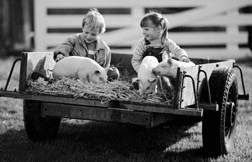

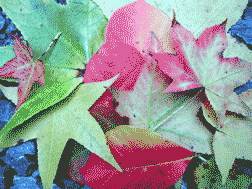
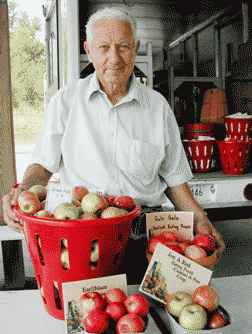



 Oil Lamps
Oil Lamps